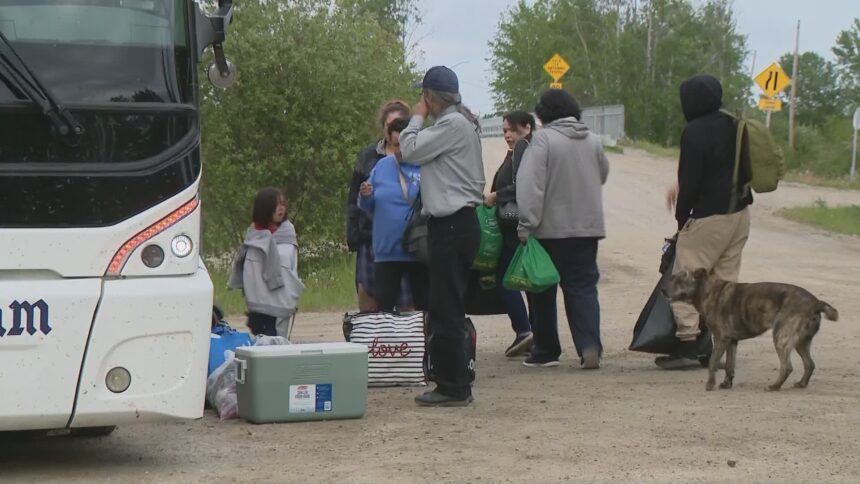As flames recede from Saskatchewan’s devastating wildfires, a new crisis smolders: hundreds of evacuees remain stranded in bureaucratic limbo, waiting for promised financial assistance that seems perpetually just beyond reach. For many families displaced by the province’s worst wildfire season in decades, the path to recovery has become an unexpected marathon of paperwork, delays, and mounting frustration.
“We lost everything—our home, our possessions, our sense of security,” says Miranda Kowalchuk, who fled Buffalo Narrows with her three children three weeks ago. “Now we’re living in a hotel room with borrowed clothes, checking our phones every hour for news about the financial support we were told would arrive ‘any day now.'”
The Saskatchewan Public Safety Agency (SPSA) announced emergency financial aid programs shortly after mass evacuations began in May, but implementation has been painfully slow. According to internal documents obtained by CO24, the system was overwhelmed by the sheer volume of applicants, with outdated processing systems and insufficient staff contributing to what one agency employee described as “a perfect storm of administrative breakdown.”
Provincial officials maintain they’re working diligently to process claims, pointing to the unprecedented scale of displacement as the primary challenge. “We’ve distributed over $3.8 million in emergency funds to more than 2,700 households,” said Minister of Public Safety Christine Tell during a press conference yesterday. “But we acknowledge that many families are still waiting, and we’re adding resources to expedite remaining claims.”
For evacuees, such assurances offer little comfort. In La Loche, community leaders report that approximately 40% of displaced residents have received no financial support whatsoever, forcing many to rely on charity and goodwill from family members and neighbors. The situation has been particularly dire for Indigenous communities, where pre-existing housing shortages and infrastructure challenges have compounded the crisis.
“The government response reveals troubling gaps in our emergency management systems,” explains Dr. Evan Harrington, disaster response specialist at the University of Regina. “When we compare Saskatchewan’s response to similar wildfire events in British Columbia or Alberta, we see significant disparities in both the speed and accessibility of financial aid.”
Community advocates have stepped into the void, with grassroots organizations coordinating donations and volunteer support networks. The Northern Saskatchewan Emergency Relief Coalition, formed spontaneously by concerned citizens, has raised over $680,000 and distributed essential supplies to hundreds of families still awaiting government assistance.
“We’re seeing extraordinary community resilience,” notes Coalition organizer Samantha Bear. “But goodwill can’t replace systematic support. These families need secure housing, consistent income replacement, and clear timelines for when they can return home—or rebuild.”
Provincial opposition leaders have called for an independent review of the emergency response, with particular focus on the financial aid bottlenecks. “This isn’t just about bureaucratic inefficiency—it’s about human dignity,” said Saskatchewan NDP Leader Carla Beck during legislative questioning. “When families who’ve lost everything have to wait weeks for promised support, we’re failing our most fundamental responsibilities.”
The situation highlights broader questions about disaster preparedness and climate adaptation in a region increasingly vulnerable to extreme weather events. Climate scientists have warned that conditions driving Saskatchewan’s intense wildfire seasons will likely worsen in coming years, requiring more robust emergency response infrastructure.
As autumn approaches and temperatures drop, the urgency grows. Temporary accommodations secured for summer months will soon face new challenges, and construction or rebuilding efforts will become more difficult with winter’s approach. For evacuees like the Kowalchuk family, each passing day without support makes eventual recovery more daunting.
“We’re not asking for charity,” Miranda emphasizes, “just the assistance we were promised so we can begin rebuilding our lives.”
As Saskatchewan confronts this immediate crisis, a more profound question emerges: in a future where climate-driven disasters become increasingly common, how will our emergency management systems evolve to ensure no Canadian is left waiting for help when they need it most?










